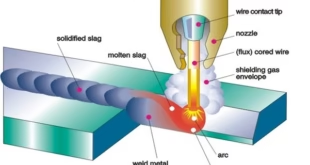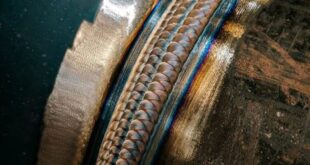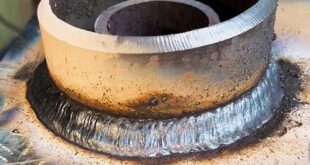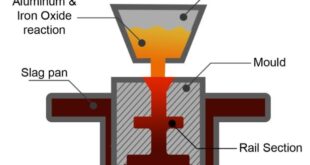Mastering Precision and Strength
Introduction:
Gas Tungsten Arc Welding (GTAW), also known as Tungsten Inert Gas (TIG) welding, is a versatile and precise welding technique that produces strong, high-quality welds. This article delves deep into the world of GTAW, exploring its principles, applications, and tips from experts. Whether you’re a novice welder or an experienced professional, understanding GTAW can elevate your welding skills to new heights.

Gas Tungsten Arc Welding (GTAW): Mastering the Craft
Gas Tungsten Arc Welding (GTAW) is a welding process that uses a non-consumable tungsten electrode to create the weld joint. The electrode produces an electric arc that melts the base metal and forms a strong, precise weld. This process is particularly well-suited for welding thin sections of stainless steel, aluminum, and other non-ferrous metals, where precision and aesthetics are crucial.
Advantages of GTAW:
GTAW offers a range of advantages that make it a preferred choice for many welding applications:
- Precision: The focused arc and precise control over heat input make GTAW ideal for intricate welding jobs, such as aerospace components and delicate artwork.
- Clean Welds: GTAW produces clean, spatter-free welds with minimal distortion, reducing the need for post-weld cleaning and refinement.
- Versatility: It can be used on various metals, from stainless steel and aluminum to copper and titanium, making it suitable for diverse projects.
- High-Quality Welds: The absence of filler material in some applications leads to high-quality, porosity-free welds with exceptional strength.
- Controlled Heat: The ability to control heat input minimizes the risk of warping, distortion, and material degradation.
Applications of GTAW:
Gas Tungsten Arc Welding finds applications in a wide range of industries and projects:
- Aerospace: GTAW’s precision is essential for joining critical components in aircraft and spacecraft, ensuring structural integrity and safety.
- Automotive: It is used for welding exhaust systems, suspension components, and other parts where corrosion resistance is vital.
- Food and Beverage: GTAW is preferred for welding stainless steel pipelines and tanks to maintain hygiene and prevent contamination.
- Art and Sculpture: Artists use GTAW to create intricate metal sculptures and artwork due to its fine control and aesthetic results.
- Medical Devices: The precision and clean welds of GTAW are crucial for fabricating medical instruments and implants.
Expert Tips for Successful GTAW:
Mastering GTAW requires skill and practice. Here are some expert tips to enhance your welding outcomes:
- Proper Tungsten Selection: Choose the right tungsten electrode for the material being welded. Thoriated, ceriated, and lanthanated tungsten electrodes offer various benefits for different applications.
- Shielding Gas Selection: The choice of shielding gas, such as argon or helium, affects the arc stability and weld penetration. Understand the gas properties for optimal results.
- Electrode Grinding: Properly grind the tungsten electrode to a precise point. A sharp and properly shaped tip ensures a stable arc and clean weld pool.
- Clean Base Metal: Ensure the base metal is free from contaminants, such as oil, grease, and rust, to prevent porosity and weak welds.
- Welding Technique: Maintain a consistent travel speed and arc length to create uniform welds. Experiment with different angles and torch positions to find the most suitable technique.
- Joint Preparation: Proper joint design and preparation are essential for successful welds. Bevel or chamfer the edges as required, and ensure proper fit-up.
FAQs
What is the key advantage of GTAW over other welding processes?
GTAW’s precision and control make it superior for applications where high-quality welds and minimal distortion are crucial.
Can GTAW be used on ferrous metals?
While GTAW is most commonly used on non-ferrous metals, it can also be used on ferrous metals with the appropriate filler material.
Is GTAW suitable for beginners?
GTAW requires a higher skill level due to its precision and control demands. Beginners might find it challenging initially but can excel with practice.
What safety measures are important for GTAW?
Adequate ventilation, eye protection, and proper handling of hot materials are essential safety precautions when performing GTAW.
Can GTAW be automated?
Yes, GTAW can be automated for repetitive tasks, offering consistent weld quality and reducing labor-intensive efforts.
What is the role of filler material in GTAW?
Filler material is added to the weld pool in certain applications to enhance joint strength and fill gaps between the base metal.
Conclusion:
Gas Tungsten Arc Welding (GTAW) is a remarkable welding technique that combines precision, control, and strength to produce high-quality welds across a variety of materials. Its applications span industries and its benefits elevate the welding process to an art form. By understanding the principles and mastering the techniques of GTAW, welders can create robust, clean, and aesthetically pleasing welds that stand the test of time.
 Welding of Welders All about Welding and Welders
Welding of Welders All about Welding and Welders



